#62 Passenger Pigeon
Audubon Havell Edition – Passenger Pigeon
The Havell Edition is the original folio edition of Audubon’s work, and is the one for which Audubon is most famous. Often called the Double Elephant Folio edition (a reference to the size of the paper), this edition of The Birds of America was published in London from 1827 to 1838. The prints were made on one of two types of paper, from mills that used similar watermarks (J Whatman or J Whatman Turkey Mill). J Whatman watermarks are found somewhat more towards the center of the paper, while the Turkey Mill watermark hugs the edge of the paper. The Havell prints are copper-plate etchings with engraving (mostly used for lettering) and aquatint (an etching technique involving the use of rosin that allows for much finer degrees of shading than basic etching). The edition was sold by subscription and plates were issued five at a time in “numbers.” Thus each plate shows the appropriate number on the left and the plate number on the right.
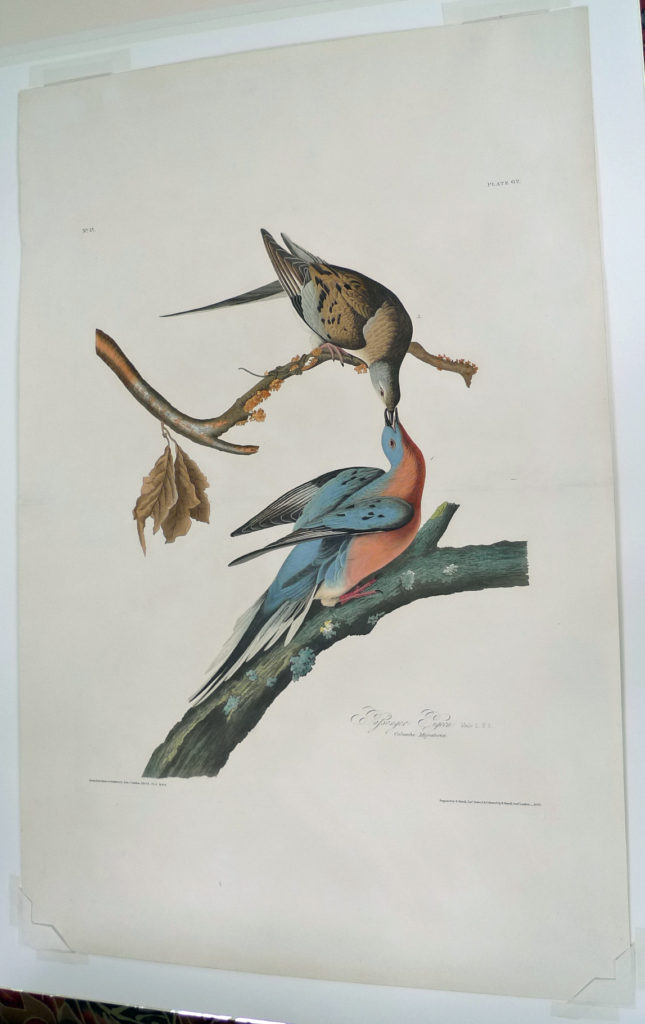
This print is PL 62 Passenger Pigeon. The print measures 39-1/4 x 25-7/8 inches and is watermarked J WHATMAN TURKEY MILL 1828. The print has excellent margins, beautiful color, and presents very well. It is in very good condition overall with one major caveat. It is from the Earl of Carnarvon partial set of The Birds of America. This partial set included 160 plates or so before the subscription was suspended. The Earl had the plates bound into a single folio volume, but it was eventually rebound by a subsequent owner into a half-size binding. To make the sheets fit, prints with small images were trimmed, while others (medium and large) were left as full sheets, but folded in half. As was the case with all the folded prints from this set, the damage on the passenger pigeon (a medium image) cut across the middle of the long dimension (right through the image of course).
The volume was disbound in the early 2000’s and all of the prints were sold off in the course of two auctions. Because the color of the prints was excellent, and there was a bit of mania surrounding the first sale (at Christie’s), some of the prints set record prices in spite of the damage they had sustained. Others, however, did not reach the (highly) optimistic reserve prices, and were therefore offered at a second auction at Sotheby’s a few years later. I purchased this print at the second auction, and had the fold professionally and skillfully repaired by the Joel Oppenheimer Gallery’s conservation lab. (The repair is not something you would necessarily see if you did not know what to look for. Or you would see it, and not really know what you were looking at.) I have had a lot of interest in this print from people who have seen photos, and also people who saw it in person, but in each case they ended up buying a different print. I’m fond of the print since the image is my favorite of all Audubon’s work. I have the print hanging in my house although in generally dark conditions.
The print is currently framed with reversible paper hinges in an archival 8-ply cotton rag mat. Any marks on the photos below are drawn on the photos to help you see the repaired areas, and of course do not appear on the print. The margins and general condition of the paper (other than the major repair) is excellent, so this condition report focuses primarily on the crease and helping you to see it through the photos. The print is lined with an archival mulberry paper to provide additional support and stability to the repaired area. This is a standard practice with most conservators when they do a major paper repair.
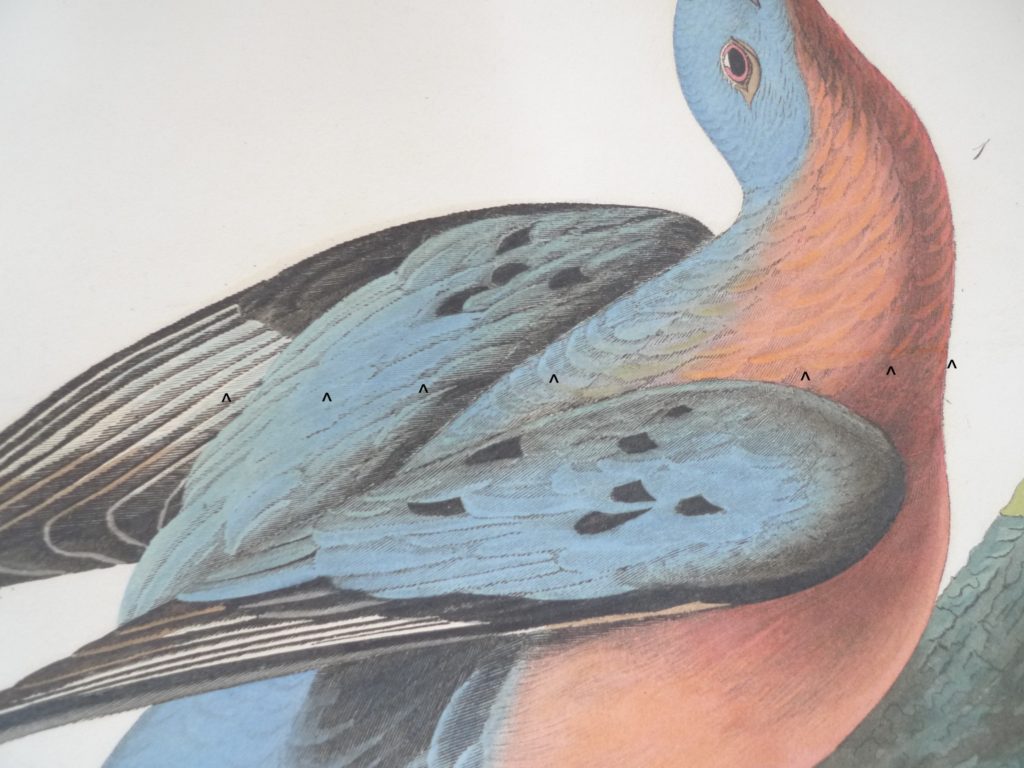
Above photo shows approximate location of crease as it goes through the center of the image area. In the affected image areas, the crease is hardest to see, whereas it is somewhat more visible in the white areas of the paper, particularly as one gets closer to the left and right edges of the sheet.
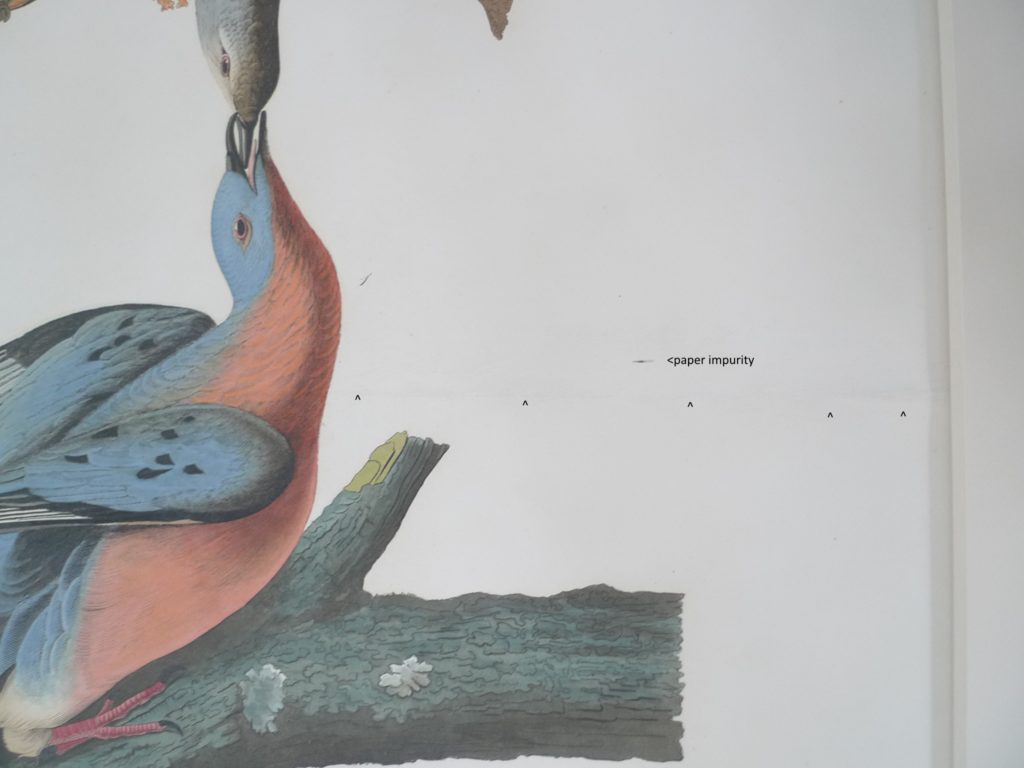
This photo shows the right side of the print, again with the crease marked. Also marked is an impurity in the paper that appears slightly above the crease. As often happens, the sheet has a few minor paper impurities (impurities that were introduced to the paper during manufacture. You may notice a few other such marks in the photos below.
The mat is to the far right of the photo. The next photo shows how the crease looks under the mat on the far right side of the print.
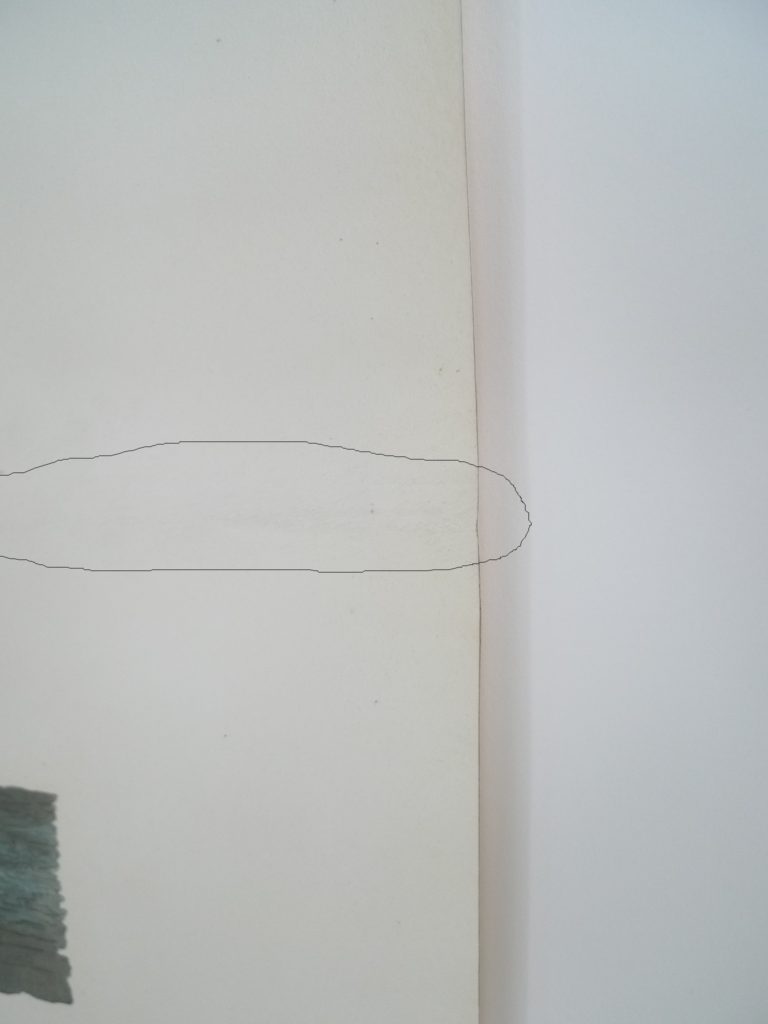

Moving left from bird…
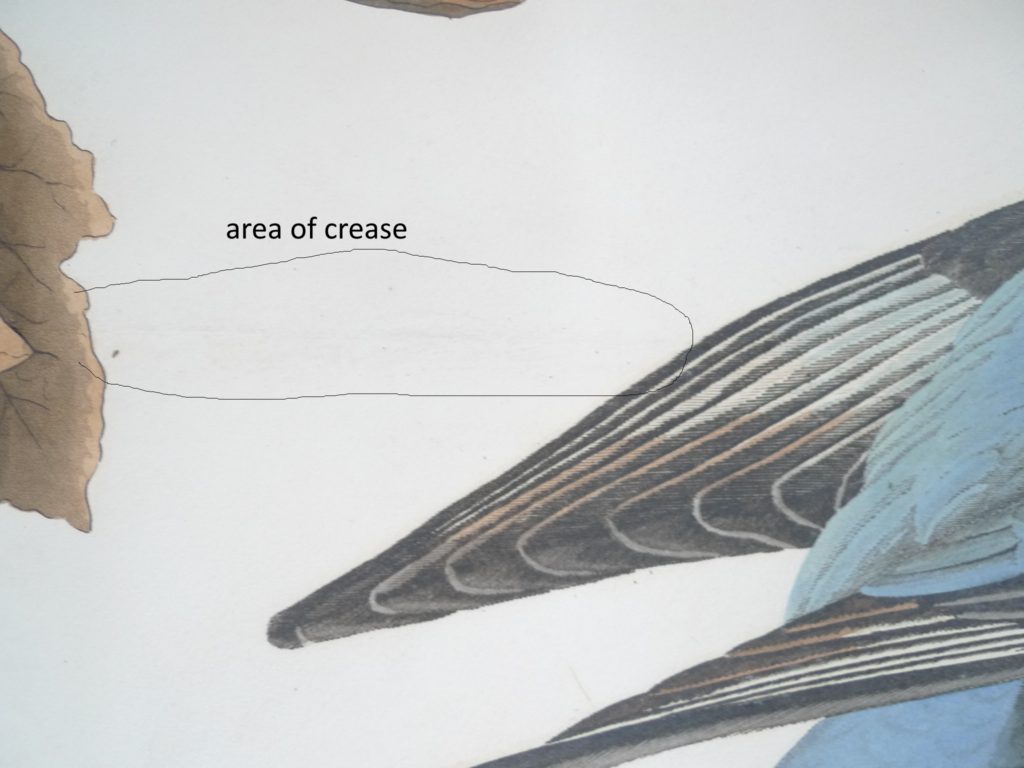
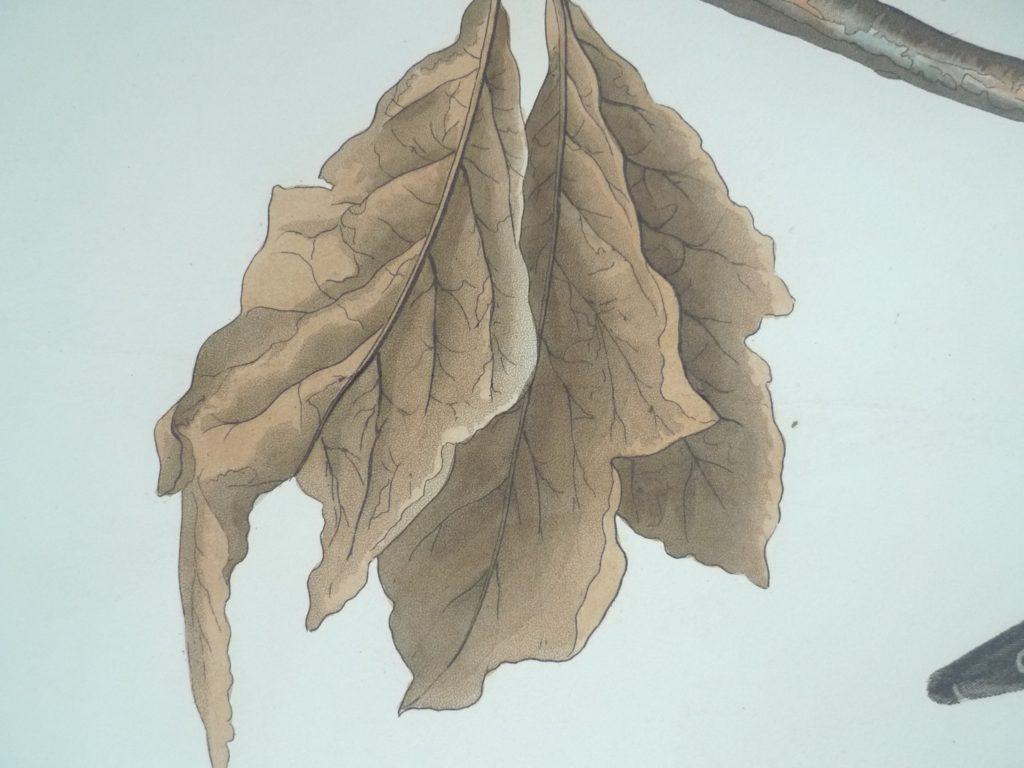
Photo below shows left side of image with mat in place.
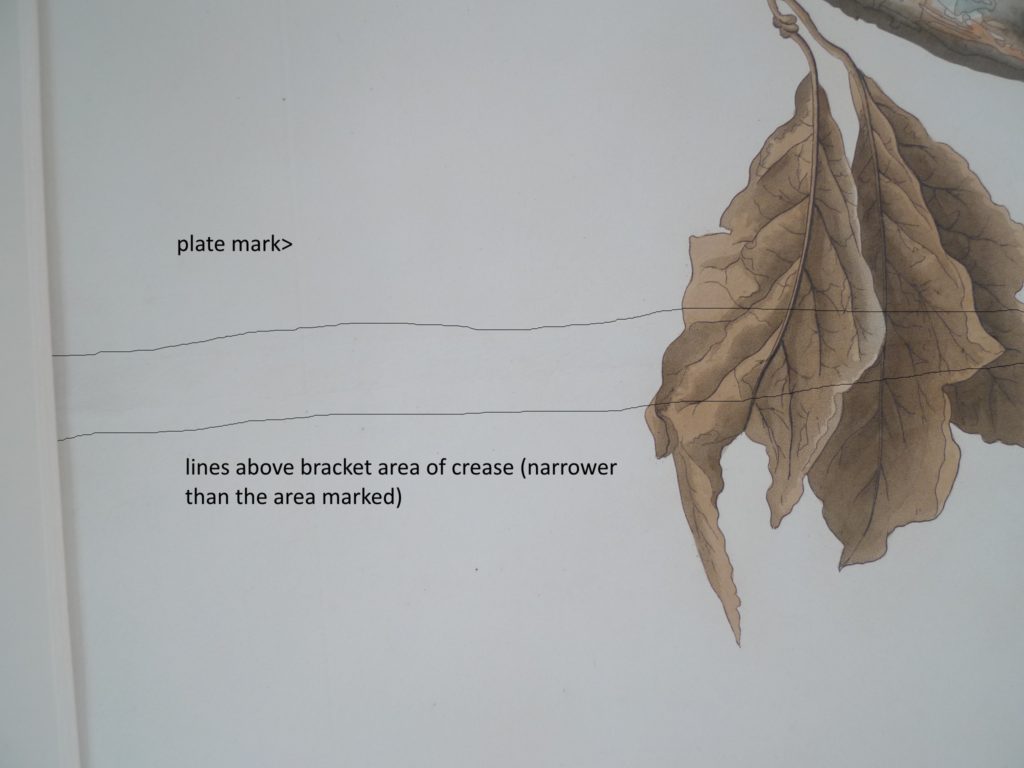
Photo below shows the entire left side including the area covered by the mat.
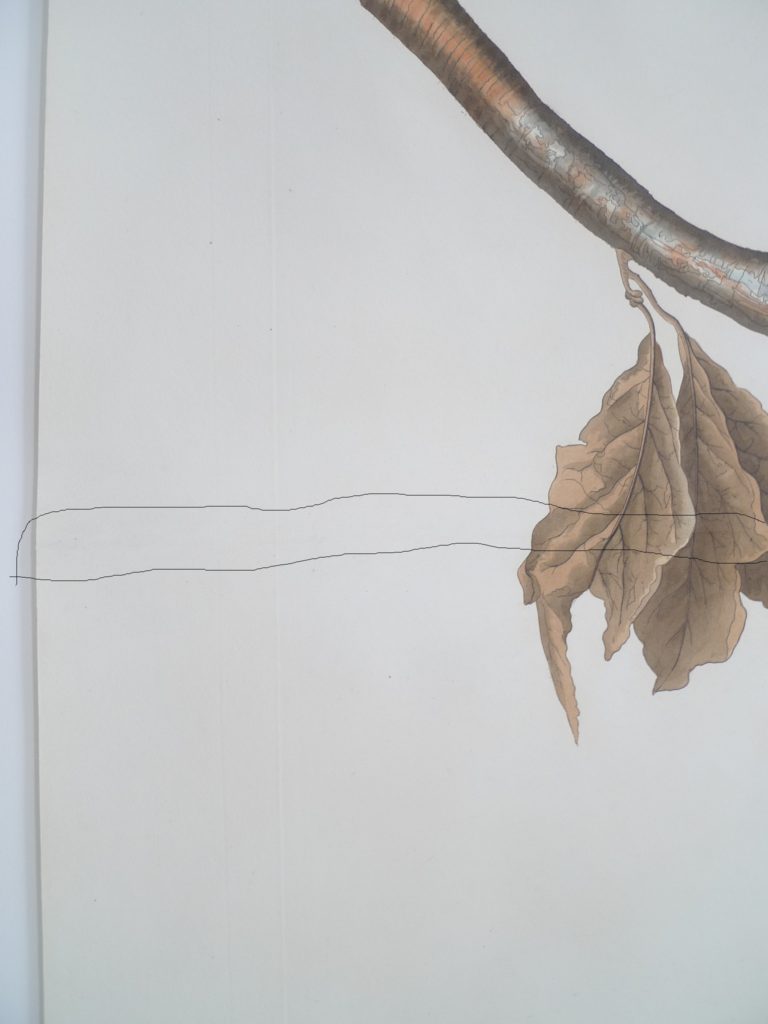


Recent Comments